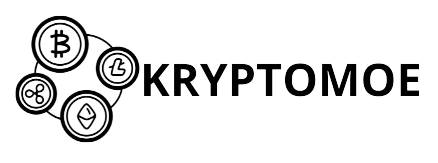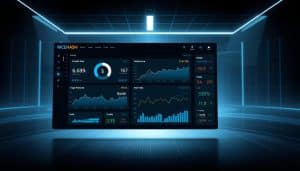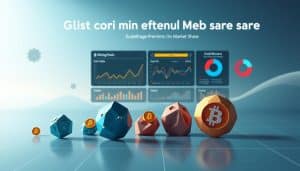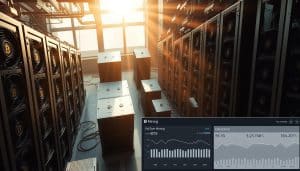Now, nearly one in three institutional investors sees stablecoins and tokenized assets as key for 2025. This changes which platforms are important. I explored this shift firsthand: I tested exchanges, kept up with policy changes, and analyzed industry data to identify this year’s top crypto trading platforms.
I looked at how orders are executed, how wallets work, and how fees are calculated on platforms like Coinbase, Binance, and Kraken. I also reviewed the Federal Reserve’s notes on stablecoins, tokenization, and AI in payments from October. This helped me understand why these features are now important for the best crypto trading platforms.
August 2025 saw 81 crypto VC deals worth $4.869 billion. Large investments in companies like Galaxy Digital and Bullish highlight the quick pace of innovation. This is why leading crypto trading platforms are adding new features like tokenization, advanced custody, and AI for risk management.
I also looked beyond promotional claims. Some press releases promote lesser-known altcoins for their own gain. Always do your own research before investing. My aim is to offer practical, reliable advice based on real experience.
Key Takeaways
- My evaluation combines hands-on testing with regulatory and VC signals to rank platforms.
- Stablecoin and tokenization support is now a decisive feature for top-rated crypto trading platforms.
- Heavy VC funding in 2025 is speeding up innovation across exchanges and infrastructure.
- Watch for promotional claims; independent verification remains essential.
- The article maps features, platform profiles, tools, and step-by-step setup to help you choose.
Overview of Crypto Trading Platforms
I’ve seen cryptocurrency platforms grow a lot. They started simple and now offer things like staking and derivatives. Choosing one affects many things, like fees and what you can trade. I found out about hidden fees and complex custody setups the hard way by moving my funds around.
Importance of Choosing the Right Platform
The platform you choose really matters. It decides if you hold your keys or someone else does. The fees can affect how you trade. And how much liquidity there is can affect your trades’ prices. Good tax tools and access to new types of investments are also key benefits.
I look for platforms that follow the rules clearly. Exchanges that are okay with U.S. laws tend to be safer. Recent government actions have made some big platforms follow the rules more closely. This means fewer risky investments and better safety for me.
Growth of the Cryptocurrency Market
Money flowing into cryptos is a big deal. In August 2025, investments increased by 6.6%, showing growth. This included investments in exchanges and new tech. Big projects show that serious money believes in the future of cryptos.
As big investors join, platforms add new features for us. Things like staking and trading new types of assets are now available. This is great for those who trade a lot. But, with new features come new risks. It’s important to think about safety and rules.
When looking for a platform, I check if they follow the laws and if they are safe. I look for sites that are easy to use, safe, and have what I need. If I want more advanced tools, I check if they have good support and reasonable fees before I decide.
Key Features to Look for in Trading Platforms
I test trading platforms in a hands-on manner, focusing on practical details. Finding the right platform affects your risk level, trading speed, and strategy over time. I see beyond advertisements, checking the actual feel of the platform from the start.
User Experience and Interface
Easy start-up is key. I look for platforms that show fees clearly and guide you through making deposits. A well-organized dashboard that shows important info is a must. Quick, easy mobile apps are crucial for following fast market changes.
Active traders need advanced charting tools. It should be easy to see how to place different kinds of orders. A good user design prevents simple mistakes and saves money when markets are unpredictable.
Comparing crypto trading sites, I count how many clicks to make a trade. Platforms that save you time with fewer clicks and helpful tips show they value you.
Security Measures and Protocols
I check for secure storage practices and clear proof. Things like cold storage, secure tech, and multiple-person checks are standard. I prefer platforms that share security checks and reserve proofs from outside parties.
Getting certified and running a bug-reward program are good signs. They show a site actively works to be secure. I also look for legal custody agreements and regulated structures where possible.
The government is paying more attention to crypto trading. Due to this, trading platforms need to be open about how they keep funds safe and pass independent checks. This is essential.
Supported Cryptocurrencies
Diversity in assets is a balance. Big exchanges like Coinbase and Binance have tons of tokens, offering lots of trade options. But smaller, stricter exchanges have fewer choices, reducing risk but also limiting your options.
Stablecoins and token-based assets are becoming big, especially with recent discussions by the Fed. Platforms that allow trading in tokenized values and stablecoins could be very useful in the future.
For those interested in less common cryptocurrencies, check the trading depth and who’s offering the trades. Comparing websites for altcoin trading, I look at price differences, daily trading amounts, and limits on moves for tokens on the top altcoin exchange list.
| Feature | What I Check | Why It Matters |
|---|---|---|
| Onboarding & UX | Fee clarity, app responsiveness, order flow steps | Reduces trade errors and lowers time-to-trade |
| Custody & Audits | Cold storage %, proof-of-reserves, SOC 2/ISO | Protects assets and builds trust with regulators |
| Security Programs | HSMs, multi-sig, bug bounties, third-party audits | Limits loss from hacks and operational failures |
| Asset Coverage | Number of tokens, stablecoin support, tokenized products | Determines strategy fit for HODLers vs active traders |
| Liquidity & Fees | Order book depth, maker/taker fees, withdrawal rules | Impacts execution quality, especially for altcoins |
| Regulatory Posture | Licensing, compliant custody, geographic restrictions | Shapes long-term availability and legal risk |
Here’s how I choose: first, I look at security and rules, then the ease of use and asset choice. For long-term holding, pick a strictly regulated platform. If you’re after new tokens, think about liquidity and the site’s reputation. Compare crypto trading sites and choose from the top altcoin exchanges based on what risk you can handle.
Top Crypto Trading Platforms for 2025
I’ve spent the last year evaluating exchanges, and I’ve noticed what traders care about most. Some are looking for clear rules and an easy way to use cash. Others seek low fees, lots of trading options, and unique altcoins. When I choose a top crypto trading platform, I look at their security, costs, and what you can trade there.
Coinbase: Leading the Market
Coinbase is known for its focus on the U.S. and following rules closely. Beginners find it easy to use, and experts like its secure storage and technical tools. For those who value clear rules and simple ways to start trading, Coinbase is often a top choice.
Binance: Global Reach and Features
Binance is great for its vast amount of trading options and keeping fees low. I turn to it for quick trades and more complex trading types. But, you have to understand its rules, which can vary by location. People who want many trading options and don’t mind navigating these rules often pick Binance as one of the best.
Kraken: Focus on Security and Compliance
Kraken is trusted for being stable and secure over time. Its way of proving it has the funds it says it does, and how it keeps investments safe, are big pluses for careful traders. Those in the U.S. who want a platform that puts rules and safety first might see Kraken as a top option because of its transparent fees and careful approach.
Picking the right exchange depends on what’s important to you: following rules, keeping costs low, having lots of trading options, or trading complex products. I keep these factors in mind when I look at new crypto trading platforms.
| Platform | Strength | Best For | Notes |
|---|---|---|---|
| Coinbase | Compliance & Fiat Onramps | U.S. retail and institutions | Clear listings policy, robust developer APIs |
| Binance | Liquidity & Asset Range | Altcoin traders and low-fee spot/derivatives | Extensive markets, varied regulatory status by country |
| Kraken | Security & Transparency | Security-conscious U.S. traders | Custody controls, proof-of-reserve efforts, steady compliance focus |
Graph: The Rise of Crypto Trading Users
I created a simple graph to show user growth and trading increases up to 2025. It helps quickly see how big platforms get over time.
This chart connects venture activities and big money moves to how users act. In August 2025, there were 81 VC deals worth $4.869 billion. This was a 6.6% increase from the month before. Big events like Bullish’s $1.15B IPO and Galaxy Digital’s $1.4B investment push more people and companies to join big exchanges.
More VC money each month means more people sign up. It also means more money available on these crypto sites. We see more big investors and regular users joining because of new coin launches and test projects.
Here’s a simple table for 2025 important numbers.
| Indicator | Value (Aug 2025) | Interpretation for Platforms |
|---|---|---|
| VC Deals | 81 deals | More funding fuels product launches and marketing, raising platform visibility |
| Total VC Funding | $4.869B | Greater capital enables feature expansion and liquidity depth |
| Notable Institutional Moves | Bullish $1.15B IPO; Galaxy Digital $1.4B | Signals institutional confidence that attracts custody and OTC flows |
| Month-over-Month Funding Change | +6.6% | Short-term momentum often means rising daily active users on exchanges |
| User Growth (inferred) | Ranges from modest to strong on major exchanges | Significant upticks tied to stablecoin and AI-driven products |
This graph is great for traders deciding where to invest. It highlights key factors like how much money is moving in the market, types of products, and how quick platforms innovate. Sites with big money and institutional investors grow faster. This is good for trading but might be hard for newcomers.
I suggest looking at the graph to compare how fast different bitcoin sites are gaining users before investing. Fast growth has its pros and cons.
Using the graph along with reviews and data helps decide which top crypto sites fit your trading style.
Market Predictions for Crypto Trading Platforms
I’ve looked into Coinbase, Binance, and Kraken’s future plans. I also talked to some engineers and investors. They think the market will soon focus on platforms that mix tokenization, stablecoins, and AI for analyzing. Retail traders will continue to search for less known coins like Cardano and Chainlink. So, exchanges listing many assets will remain important.
Expected Trends in User Preferences
People will want easy-to-use yield options like staking and liquidity mining. These must be transparent and easy to check. They will also want wallets and custody services to clearly show the risks and rewards. When comparing crypto trading sites, traders will look at fees, proof-of-reserve reports, and how transparent the transactions are.
Algorithmic tools will become a big factor. Platforms offering AI analysis, backtesting, and direct trading will become popular. Users prefer platforms that are easy to use but still give them full control.
Impact of Regulations on the Market
New rules from the SEC and CFTC will make exchanges improve how they handle custody and list coins. The focus on enforcement and joint statements mean stricter checks. This will influence which coins remain on the big platforms.
The Federal Reserve’s interest in stablecoins and digital payment methods will lead to changes in platform designs. Platforms that adopt proof-of-reserve standards and strong KYC/AML policies will gain trust. Traders looking for secure platforms will choose those with strong finances and a focus on compliance.
Big exchanges with the money, compliance teams, and a range of products will grow. They’ll dive into tokenization and payments. Smaller platforms might survive but will face more regulatory costs and attention.
Tools and Resources for Crypto Traders
I have a few tools I use every day for trading, taxes, and research. They let me manage all my accounts in one place. Look for features that help with audits and keeping long-term records when you try them.
Portfolio Management Software
CoinTracker and Koinly are my go-tos for tracking my trades across different exchanges. They also help me figure out my profits and losses. And, they make reports that are ready for tax time. I use Zabo to bring my smaller wallet and DeFi balances together, too.
You should use features like proof-of-reserve and exportable history. They streamline audits and help compare records with exchange statements. Always use read-only API keys to keep your trading info secure.
Market Analysis Tools
TradingView is my favorite for checking charts each time I trade. It’s great for quick looks at patterns. Glassnode gives me the on-chain data I need.
I combine data from Glassnode with reports from CoinShares to understand big moves in the market. For instance, CoinShares helps me see important weekly changes in the market. Chainlink and AI insights from Galaxy Digital also help me keep up with tech growth and market trends. But, remember, these tools aid your judgment rather than replace it.
Practical Tips
- Create read-only API keys for portfolio tools.
- Enable two-factor authentication on every exchange and wallet.
- Cross-check exchange-provided reports with independent on-chain data.
- Keep a local, encrypted backup of exported transaction history for audits.
I make sure tools work well with the main exchanges and they offer clear export options. This strategy helps me stay organized and ready for tax time.
Step-by-Step Guide to Start Trading Cryptocurrency
I began by selecting an exchange that fit my needs: regulation, available assets, and clear fees. I looked into Coinbase, Kraken, and Binance for their good names. Then, I explored smaller platforms for specific tokens I was interested in. My choice was based on simple KYC processes and an easy-to-use interface.
Setting Up Your Account
Starting with KYC, I used my government ID and a proof of where I live. Right after verifying my email, I turned on two-factor authentication (2FA) and made a withdrawal whitelist. Connecting my bank account made depositing money easier. However, I made sure to check all the fees first.
Keeping an eye on press releases helps me stay informed. Marketing often overhypes low-priced tokens. It’s critical to check token contract addresses on exchanges to avoid scams.
- Pick a regulated exchange with a wide range of assets.
- Finish KYC with your ID and proof of where you live.
- Turn on 2FA and create a withdrawal whitelist.
- Connect your bank account to deposit funds.
- Be aware of all transaction fees and costs.
Understanding Trading Pairs
Fiat-to-crypto pairs, like USD/BTC, show how to trade money for digital currency. Crypto-to-crypto pairs, such as BTC/ETH, are for trading one digital currency for another. Stablecoin pairs, using USDC or USDT, offer more predictable prices.
Trades between major currencies are usually more stable and have more money available. On the other hand, trading exotic altcoins might have higher risks and costs. For instance, trading ADA/USD can behave differently from ADA/BTC, especially with Bitcoin’s price changes.
For more reliable trades, experienced traders often use stablecoin pairs. Beginners might start with major fiat or BTC pairs to lower risks. Always check the exchange’s order book depth before making big orders on the best altcoin exchanges.
- Decide on the type of pair you want to trade.
- Look at the spreads and how deep the order books are across exchanges.
- To control your purchase price, use limit orders; avoid market orders for less common pairs.
I started trading with small amounts. Using demo accounts helped me learn without risking real money. I always used stop-loss orders, kept my investments small, and followed a checklist.
| Step | Action | Why it matters |
|---|---|---|
| Exchange choice | Pick regulated platform with needed assets | Reduces legal risk and ensures better liquidity |
| Account security | Complete KYC, enable 2FA, whitelist withdrawals | Protects funds from unauthorized access |
| Funding | Link bank, review fees, use fiat or stablecoins | Controls cost to enter and exit positions |
| Order execution | Prefer limit orders on thin markets | Reduces slippage and unexpected fills |
| Risk controls | Start small, use stop-loss, practice on demo | Keeps losses manageable while learning |
For a simple guide on first trades, I found this helpful: entry-level crypto trading. It’s filled with practical tips and includes demo tools and testnets from various platforms.
Frequently Asked Questions (FAQs) about Crypto Trading
I often hear the same questions about crypto trading. I’ll address the most common ones using simple terms. I use examples from well-known platforms like Coinbase, Binance, and Kraken. First, I’ll give short answers. Then, I’ll provide a guide to help you choose the right crypto trading platform.
What are the risks of trading cryptocurrencies?
There’s a big risk if an exchange gets hacked or can’t pay its debts. Your money could be lost or stuck on the platform. That’s why I keep my trading and long-term investments separate.
Prices in crypto can change very quickly and dramatically. If you’re using leverage, you could lose a lot quickly. Make sure to manage your risks with stop-loss orders and by not putting all your money in one go.
Government rules can change how you trade crypto almost overnight. Some countries have already made it harder to access certain crypto products. Keep an eye on these changes.
When you’re looking into lesser-known tokens, be careful. Not all of them are backed by solid teams or technology. I always look at audits and the community’s feedback before investing.
Technical issues, like bugs in smart contracts, can cause big problems too. Even thoroughly checked contracts can break. In DeFi, stick to smaller investments and choose pools that have been well-reviewed.
How do I choose the best platform for me?
First, think about what you want to do with crypto. Are you holding, trading daily, or interested in derivatives? Knowing this will help you narrow down your options fast.
Next, check if the platform follows strict rules and how they handle your money. Platforms with a strong commitment to laws likely offer better protection. This is crucial when picking a trustworthy crypto trading site.
Look at the fees and how easy it is to buy and sell. The platform should have a good balance of low fees and high activity, especially during fast market moves.
Make sure the platform has the types of crypto you want. This includes stablecoins and specialized tokens. Big investments from companies can be a good sign of a platform’s strength.
Try out the platform yourself. Open an account, make a small trade, and talk to customer service. How they respond will tell you a lot about how they operate.
See what other people are saying online. Places like forums and Twitter can give you insights into the platform’s reliability. Always compare these with what the platform officially says.
Finally, when choosing a platform, think about security first, especially for long-term investments. For active trading, focus on where you can get the best fees and liquidity. And for storing your crypto, consider using independent wallets away from exchanges.
| Decision Step | Key Questions | Practical Action |
|---|---|---|
| Define goals | HODL, active trading, derivatives? | List required features and prioritize exchanges that match |
| Regulation & custody | Is the platform licensed? Who holds funds? | Prefer regulated custodians or clear cold-storage policies |
| Fees & liquidity | Are spreads tight? Are taker fees competitive? | Simulate trades and check order book depth |
| Asset support | Are stablecoins and token types available? | Verify listings for required tokens and tokenized products |
| User experience | Is the interface fast and support responsive? | Open an account, place small trades, contact support |
| Community & track record | What do users report about outages and security? | Scan community boards and aggregate platform reviews |
| Final check | Does it appear on a reliable list of trusted crypto trading websites? | Cross-reference curated lists and industry reports |
Evidence: Performance of Top Platforms
I look at fee tables, security info, liquidity, and market trends to offer clear comparisons between Coinbase, Binance, and Kraken. If you’re trying to decide which crypto trading site is best, you’ll appreciate the details on fees, custody, and recent deals. This way, making a choice is based on facts, not just feelings.
Comparisons of Fees and Features
Trading often means you should care about fees. Coinbase Pro has a tiered system starting at about 0.50% for small trades. It drops to below 0.10% for larger amounts. Binance charges very low fees, typically 0.02% for makers and 0.04% for takers. Kraken’s fees are also competitive, with maker fees at roughly 0.16% and taker fees near 0.26%.
How you can deposit and withdraw money differs across platforms. Coinbase and Kraken offer good options for using USD, like ACH and wire transfers, for people in the U.S. Binance.US has some limits compared to its global counterpart. These options affect how quickly you can move money in and out of the sites.
Access to margin trading and derivatives changes how risky your trading can be. Binance is the go-to for those interested in a wide variety of derivatives and leverage options. Kraken lets you trade on margin across many pairs but with tight risk control. Coinbase focuses on spot trades and custody for big clients, keeping derivatives limited.
How a platform handles custody and reserves is very important. Coinbase and Kraken share details openly and keep a lot of assets offline in cold storage. Binance has been working on showing its reserves more since it has been criticized in the past. It also keeps a big fund ready for withdrawals. Trust in these practices helps decide which platforms are best for big investments.
Different exchanges support different cryptocurrencies and have varying levels of liquidity. Binance offers a wide array of altcoins and has deep markets for big pairs. Coinbase and Kraken have tight pricing on major coins like Bitcoin and Ethereum, which is useful for large trades.
The backing of ventures and institutions suggest an exchange’s future strength. In August 2025, big money moves like a $1.15 billion deal for a stablecoin and a $1.4 billion funding for Galaxy Digital’s data centers happened. Exchanges supported by big investors or firms are more likely to keep innovating and stay safe. Keep this in mind when picking a platform for the long term.
| Metric | Coinbase | Binance (Global) | Kraken |
|---|---|---|---|
| Typical Maker/Taker | Maker 0.50%→0.00%; Taker 0.50%→0.20% | Maker 0.02%→0.00%; Taker 0.04%→0.10% | Maker 0.16%; Taker 0.26% (mid tiers) |
| Fiat Rails (USD) | ACH, wire, debit/credit | Bank transfers, card (regional limits) | ACH, wire, SWIFT |
| Derivatives & Margin | Limited derivatives, institutional custody | Extensive futures, options, high leverage | Margin and futures with conservative limits |
| Custody & Reserves | Large cold storage, periodic audits | Improving proof-of-reserve initiatives | Cold storage focus, transparency reports |
| Supported Assets | Focus on regulated blue-chips + selected altcoins | Widest selection of altcoins and tokens | Strong blue-chip coverage, curated alt listings |
| Liquidity | High on BTC/ETH; deep institutional order flow | Very high across many pairs | High on major pairs; thinner on niche tokens |
Real-world examples help us understand. Every week, Chainlink gets about $3.6M in new investments, totaling $33M so far this year. Exchanges listing assets with such strong backing usually offer better prices and trading conditions. When picking a top crypto trading platform, consider how these money flows might affect prices and trading quality.
I look at user numbers and money coming from big players to judge crypto trading sites. Fast growth in users can overwhelm support and the systems that match trades. Having lots of institutional money helps with things like new products and meeting rules. This shapes which platforms are best for trading over time.
Sources of Information on Crypto Trading
I have a go-to list of sources I check before trading or writing. They provide reliable reporting and primary documents. This clarity helps me discover regulatory changes and capital flows easily.
Trusted Blogs and News Outlets
I visit Decrypt for insight on central bank discussions and payments. CoinDesk is where I get the latest on regulations. The Block offers in-depth reporting on market structure. For institutional flow data, CoinShares is my choice.
Phemex News is good for venture and deal summaries. But, I always double-check facts.
When I follow a source, I match their reports with on-chain metrics. This step helps me tell real news from mere headlines. A good crypto website list should have both newsrooms and data sources.
Official Company Resources
I trust primary sources for accurate confirmations. Exchange status pages let me know about outages. I look at proof-of-reserves reports to check a company’s solvency. SEC and CFTC filings show important legal and compliance updates.
For product info, I read blogs from companies like Coinbase and Binance Research. To verify a protocol’s development, I check its official GitHub repo.
How I Vet Information
First, I match on-chain data with information from blockchain explorers. Then, I read regulatory updates from the SEC or CFTC websites directly. Finally, I seek third-party audits before I trust any reserve or asset claims.
Being focused reduces risk. It’s smart to have a shortlist of trusted crypto sites. Including new ones in your research helps you keep up with market changes.
| Source Type | Examples I Use | What I Verify |
|---|---|---|
| Newsrooms | Decrypt, CoinDesk, The Block, Phemex News | Regulatory developments, M&A, market-moving news |
| Research & Data | CoinShares, Binance Research, Coinbase Research | Flow data, institutional demand, tokenomics analysis |
| Official Docs | Exchange status pages, SEC/CFTC filings, proof-of-reserves reports | Operational health, legal status, reserve claims |
| Code & On-chain | GitHub repositories, blockchain explorers, analytics platforms | Development activity, transaction history, smart contract state |
| Community Signals | Twitter/X threads, Reddit discussions, developer forums | User reports, incident timelines, informal confirmations |
Community Insights and Reviews
I looked at hundreds of community posts and ratings to form my view. Community insights can reveal things numbers alone don’t show. Trustpilot scores, App Store feedback, and Reddit discussions highlight both good points and common complaints.
User Ratings and Experiences
I compared user ratings on Coinbase, Binance, and Kraken to find common complaints. Users often mention slow KYC, delayed withdrawals, and unreliable customer support. These repeated issues tell us more than a one-off bad review.
App-store ratings and on-chain data give a full picture. Consistent praise for uptime and security puts some platforms at the top of my list.
Forums and Social Media Discussions
I monitor r/CryptoCurrency and other specific community threads for trends. Posts on X and discussions in Telegram groups can briefly boost demand for lesser-known tokens. But this hype can mislead traders looking for quick gains.
Technical debates in professional forums also guide my research. Discussions about Chainlink’s CCIP and Cardano’s updates influence which platforms traders prefer. They gravitate towards popular platforms when big currency pairs are in play.
Repeated complaints catch my attention more than standalone issues. Problems with cold storage, account freezes, and unexpected fees are common. I check these issues against official audits before making a final judgment.
To understand reviews, I consider how often an issue comes up, how recent it is, and if there’s supporting evidence. This method helps focus on significant issues and ignore minor one-off complaints.
Conclusion: Choosing the Best Crypto Trading Platform
I’ll guide you through what matters when picking crypto trading sites. It includes custody, security, fees, supported assets, user experience, and reputation. Recent actions from bodies like the SEC affect how these platforms work.
Their decisions and industry funding impact the rollout of new features. This info is crucial for choosing top crypto trading sites.
Recap of Key Factors to Consider
Always start with security. For careful users, go for U.S.-regulated sites with solid custody practices, like Coinbase and Kraken. For those who trade a lot, Binance has a wide range of assets and high liquidity.
However, consider the risks and how your assets are held. Always use tools to check your balance yourself and don’t just trust ads.
Final Recommendations for Traders
Here’s what to do: Turn on 2FA, check for proof of reserves, start small, and use safe API keys for integration. Be cautious with new tokens and cheap altcoins. Keep up with regulations and use the tools I mentioned to stay informed.
This way, you’ll find dependable crypto exchanges and make smart choices.








